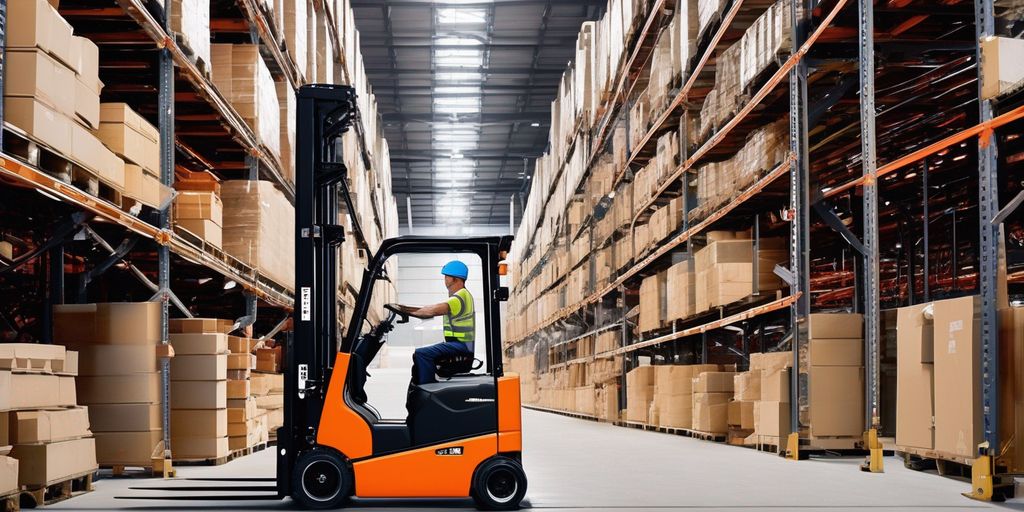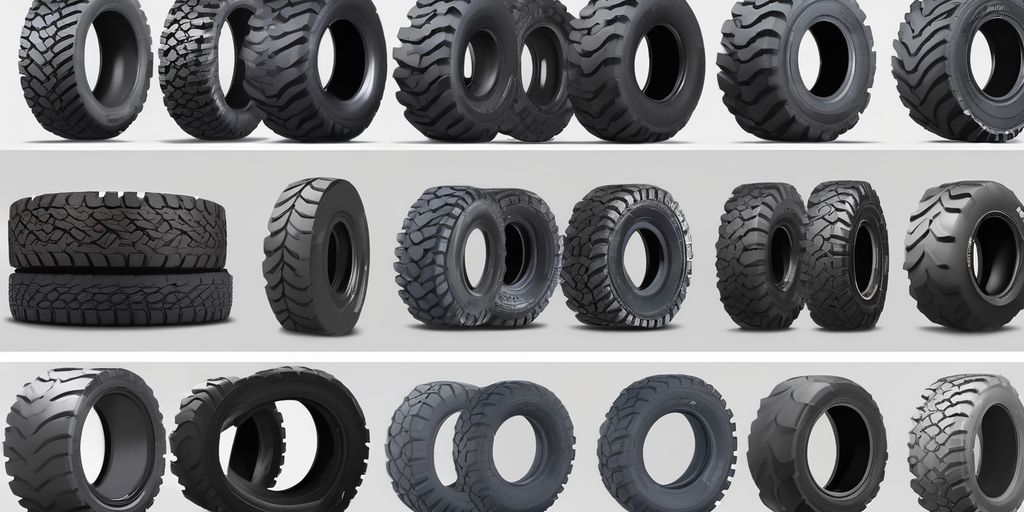Forklifts are essential tools in many industries, but they require regular maintenance to stay in top shape. Preventative maintenance ensures that your forklift operates safely and efficiently, reducing the risk of accidents and costly repairs. In this article, we'll explore the best practices for maintaining your forklift, from daily inspections to seasonal upkeep. We'll also discuss how regular maintenance can boost productivity, enhance safety, and save you money in the long run.
Key Takeaways
- Regular maintenance keeps forklifts running safely and efficiently.
- Daily, weekly, and monthly checks are crucial for optimal performance.
- Proper upkeep can extend the lifespan of your forklift.
- Well-maintained forklifts help avoid costly emergency repairs.
- Following manufacturer guidelines ensures thorough maintenance.
Essential Best Practices for Forklift Maintenance
Regular maintenance of forklifts is vital for ensuring safety, boosting productivity, and extending the lifespan of the equipment. Implementing a structured maintenance routine can prevent costly repairs and unexpected breakdowns. Here are some essential best practices to keep your forklifts in top shape.
Creating a Forklift Preventative Maintenance Checklist
Developing a preventative maintenance checklist for forklifts is crucial to ensure they remain in optimal condition. This checklist helps catch potential issues before they become major problems.
Enhancing Safety Through Regular Maintenance
Identifying Potential Hazards
Regular forklift maintenance is crucial for preventing accidents and ensuring the safety of operators and other employees. By performing routine checks, potential hazards like leaks or brake issues can be identified and addressed before they become dangerous. Proper maintenance involves regular inspections of key components such as brakes, tires, hydraulic systems, and lifting mechanisms.
Regular maintenance of forklifts is a key factor in preventing accidents and ensuring the safety of operators and other employees.
Ensuring Compliance with OSHA Regulations
Adhering to OSHA’s daily examination requirements and using their checklists can help identify maintenance issues early on, keeping the workplace safe and compliant with regulations. Ensuring that seatbelts, warning lights, and other safety features are functioning properly also contributes to a safer environment.
Training Employees on Safety Protocols
Training employees on safety protocols is essential for maintaining a safe workplace. Workers should be trained to perform basic inspections before each shift, including checking for leaks, brake issues, and other potential hazards. This not only enhances safety but also keeps the machine running smoothly, leading to increased productivity.
Increasing Productivity with Well-Maintained Forklifts
Keeping your forklift in top shape means it's always ready to tackle the job at hand. Sudden breakdowns and prolonged downtime become rare, letting operators work efficiently without unexpected stops. This steady stream of performance boosts a company's output significantly. Equipment that receives routine maintenance runs smoother and is less likely to suffer from the wear and tear that slows down operations.
Cost Benefits of Preventative Forklift Maintenance
Minimizing Repair Costs
Regular maintenance can significantly reduce expenses by addressing minor issues before they escalate into major problems. By keeping forklifts in top shape, you can avoid frequent repairs and replacements, saving money in the long run. This proactive approach helps in preserving the lifespan of your equipment, ensuring you get the most value from every dollar spent.
Avoiding Emergency Breakdowns
Broken forklifts are a leading contributor to unplanned downtime, costing many businesses as much as $10,000 per hour. Preventative maintenance helps in avoiding these costly emergency breakdowns. By scheduling regular check-ups, you can identify and fix potential problems before they cause a complete halt in operations.
Maximizing Return on Investment
Investing in regular maintenance not only keeps your forklifts running smoothly but also maximizes your return on investment. Well-maintained forklifts have a longer lifespan and higher resale value. This means that when it's time to upgrade, you can sell your old equipment at a better price, making the most out of your initial investment.
Preventative maintenance is a cost-effective strategy. By addressing minor issues before they escalate, you can avoid expensive repairs and replacements.
Cleaning and Upkeep for Optimal Performance
Keeping your forklifts clean is crucial for spotting damage early. Regular cleaning helps identify broken or damaged parts and ensures the machine is in good working condition. Dirt and grease can harm the forks and their operational mechanisms, so it's essential to keep them clean.
Importance of Regular Cleaning
Cleaning is an essential part of forklift maintenance. When you think about servicing your forklift, you might consider tasks like changing the oil or inspecting the forks. However, cleaning is often overlooked. Regular cleaning can extend the life of your machine and improve its performance.
Best Cleaning Practices
- Daily Cleaning: Wipe down the operator's area to remove debris and obstructions. A clean operator's area enhances safety and operator comfort.
- Weekly Cleaning: Use a mild detergent to clean the exterior and forks. This helps in removing any buildup of dirt and grease.
- Monthly Cleaning: Inspect and clean the engine compartment. Ensure all filters are clean and replace them if necessary.
Identifying Wear and Tear Early
Regular cleaning makes it easier to spot signs of wear and tear. Look for cracks, rust, or other damage during your cleaning routine. Early identification of these issues can prevent costly repairs and downtime.
Regular upkeep ensures safety, efficiency, and longevity of forklifts. Choose qualified partners for quality service and stay OSHA-compliant.
Streamlining Corrective Maintenance Processes

Developing a Response Plan
Creating a clear response plan for corrective maintenance is essential. Corrective maintenance is key to keeping your operations running smoothly. A well-defined plan helps in quickly addressing issues, minimizing downtime, and ensuring that repairs are done efficiently.
Training Maintenance Staff
Proper training for maintenance staff is crucial. They should be well-versed in the latest techniques and tools to handle repairs effectively. Regular training sessions can help in keeping the team updated and ready to tackle any maintenance challenges.
Utilizing Technology for Maintenance Tracking
Using technology can significantly streamline the maintenance process. Implementing software like Limble can help in tracking maintenance activities, scheduling repairs, and ensuring that all tasks are completed on time. This not only saves time but also helps in maintaining compliance with regulatory standards.
Thorough documentation of maintenance activities not only helps track compliance with regulatory standards but also provides valuable insights into long-term wear patterns and overall upkeep costs.
By following these steps, you can ensure that your corrective maintenance processes are efficient and effective, ultimately leading to better performance and longevity of your equipment.
Conclusion
In conclusion, taking care of your forklift through regular preventative maintenance is essential for keeping it in top shape. By sticking to a consistent maintenance schedule, you can catch small issues before they become big problems. This not only keeps your equipment running longer but also ensures a safer work environment. Clean forklifts are easier to inspect and maintain, which helps in spotting any damage early. Remember, a well-maintained forklift is not just about avoiding costly repairs; it's about boosting productivity and keeping everyone safe. So, make sure to follow the best practices and keep your forklifts in excellent condition.
Frequently Asked Questions
Why is regular forklift maintenance important?
Regular maintenance helps prevent unexpected breakdowns, keeps the forklift running smoothly, and ensures safety features are working properly.
What should be included in a daily forklift inspection?
A daily inspection should include checking the brakes, steering, tires, forks, and fluid levels. Make sure there are no visible damages or leaks.
How often should I perform maintenance on my forklift?
You should perform daily, weekly, and monthly checks. Seasonal maintenance is also important to adjust for weather conditions.
What are the benefits of a preventative maintenance checklist?
A checklist helps you stay organized, ensures you don't miss any important checks, and keeps your forklift in top shape.
How can regular maintenance improve safety?
Regular maintenance helps identify potential hazards early, ensures compliance with safety regulations, and reduces the risk of accidents.
What should I do if I find an issue during an inspection?
If you find an issue, report it immediately and do not use the forklift until it has been repaired. Follow your company's maintenance response plan.




Leave a comment
This site is protected by hCaptcha and the hCaptcha Privacy Policy and Terms of Service apply.